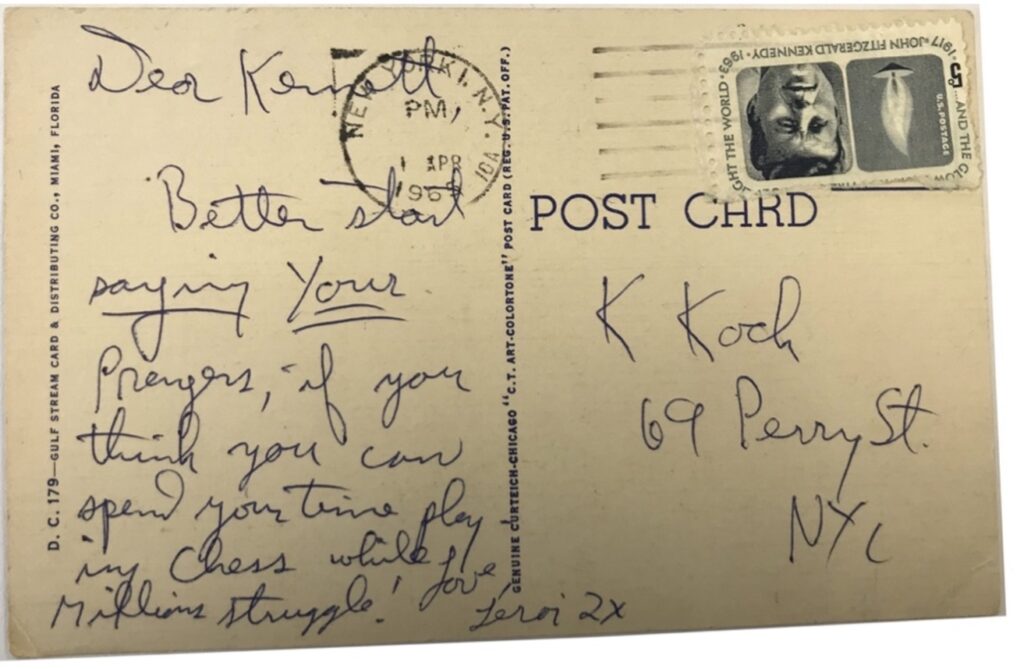As part of a cluster of essays on “Interpretive Difficulty” published by Post45, the scholar Joshua Kotin recently published a fascinating piece about a mysterious postcard that Amiri Baraka sent to Kenneth Koch on April Fool’s Day 1965, with a racist image on the front and a hostile handwritten message on the back (“Better start saying your prayers, if you think you can spend your time playing chess while millions struggle!”). Attempting to puzzle out the interpretive conundrums the postcard presents, Kotin ponders whether it should be read as a joke or a threat. He delves into the circumstances which may have led Baraka to write the postcard, especially his radical break with the white bohemian poetry world and his New York School poetry friends like Koch and Frank O’Hara, which occurred following Malcolm X’s assassination in February 1965.

However, that’s not all — there is a plot twist to this story. Shortly after Kotin’s essay appeared, the scholar and poet Nick Sturm alerted Kotin to another possibility — that the postcard was actually written by Ted Berrigan, as a playful joke, based on the extreme similarity to Berrigan’s handwriting and his own penchant for April Fool’s jokes and pranks of this sort. But wait — there’s more: Berrigan’s widow, Alice Notley, disagreed and didn’t think her husband had written the card. You’ll have to read the essay’s postscript to see how Kotin navigates these murky yet fascinating interpretive waters.


Andrew, I should really read Joshua Kotin’s piece before commenting, but I did want to say that Amiri and my father remained friends up until my dad died in 2002. My father could be pretty good at rolling with these kinds of punches, or with knowing where intense feeling came from and knowing it wasn’t the whole story of a person, particularly when it came to issues of social injustice. PS He didn’t play chess.
Ted Berrigan’s handwriting is nearer to that seen in the postcard. Here is a 1972 inscription by him:
https://www.thirdmindbooks.com/pages/books/2641/ted-berrigan/many-happy-returns
The ‘L’ in ‘Love’ is constructed the same. In the postcard the joining of it to the ‘o’ may be due to cramping for space reasons. The ‘D’ in the postcard and the inscription are identical: each is a single stroke beginning with a short vertical which makes a small clockwise loop to a large counterclockwise belly of the ‘D.’ The top finishes very high above the initial stroke and then loops back to the right in a distinctive long line.